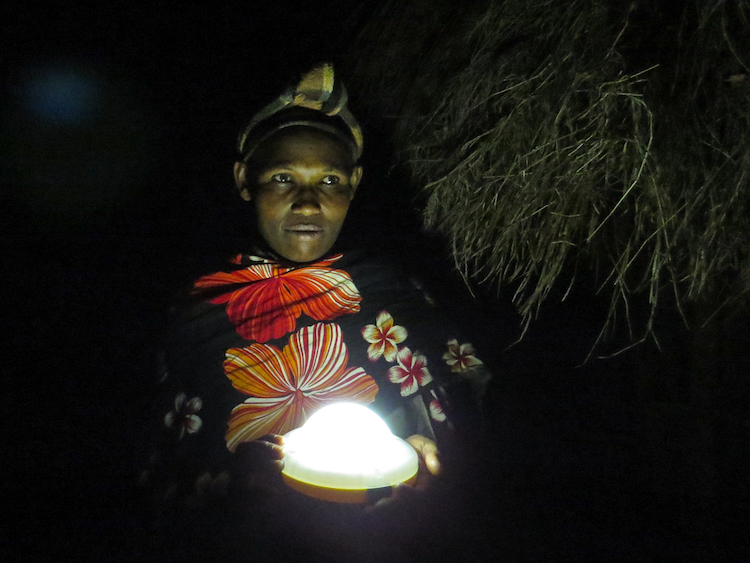
Empowering Women to Power Up the Rural Poor
An estimated 1.2 billion people worldwide lack access to electricity, and most resort to kerosene as their primary lighting source. It has been widely asserted that replacing kerosene lamps with solar lighting could offer relief from toxic smoke and high prices, supply better quality and more hours of nighttime light, enhance safety, and provide an affordable way to charge cell phones.
A recent article in The Economist reports a randomized controlled trial (RCT) in India has found that installing minigrids in small villages that have no electricity resulted in little or no positive impact on the villagers’ lives. We don’t question these results; however, our own research into solar lantern use in rural Tanzania, along with observations from working with dozens of solar-lighting social entrepreneurs from all over the world, paints a different picture.

A Santa Clara team conducted research in Tanzania, where only 7 percent of rural residents have access to electricity through a partnership with Solar Sister—a social enterprise that has dual missions: providing reliable lighting to rural communities in central Africa and economically empowering women. Detailed interviews with 257 Solar Sister customers and Solar Sister entrepreneurs in more than 20 rural villages found that the use of solar lanterns among survey respondents had the following outcomes:
- Improved education and health
- Increased productive time by 27 days per year
- Improved finances
- Increased the agency, status, and control over resources of women
The Santa Clara team’s research results, while not an RCT, are summarized in our Turning on the Lights white paper. Why might the results of these two studies be so different? We examined them in detail and discovered some fundamental differences.

First, local context: kerosene is subsidized in Uttar Pradesh, India, where the RCT took place, skewing the market. What works in one geographical area can’t be generalized to results everywhere. Because social entrepreneurship is rooted in the local context, it often has better results than solutions imposed from outside, including charity.
Second, a male-dominated, solar-power enterprise delivered a technology solution to villagers in India; the social enterprise in the Santa Clara study focused both on improving lighting and empowering women in rural developing areas. While energy poverty affects both women and men, the burden of household energy supply falls disproportionately on the shoulders of women and girls in low-income countries. A gendered lens is important to understand social impact clearly.
Third, there were fundamental differences in the business model: the RCT compared a control group of villages given no lighting intervention to villages where a local provider agreed to install a solar-powered minigrid service, a simple transactional business model. The Solar Sister business model in Santa Clara research engages women to sell solar lanterns to the people in their own and other local communities. The solution is woven into the fabric of the communities.
Fourth, the RCT measured impact of solar minigrids on fuel expenditures, lighting hours, quality of lighting, and household savings and expenditures. The Santa Clara study took an integral approach to human development, including energy poverty and the agency of women.
Studies show that women reinvest 90 percent of their income toward their communities and families, while men reinvest less than 40 percent.
Comparing the studies reveals that, to paraphrase Pope Francis, authentic human development requires an integral approach to poverty and protecting the planet. The Santa Clara study reinforces that empowering women must be part of successful social impact endeavors. Studies show that women reinvest 90 percent of their income toward their communities and families, while men reinvest less than 40 percent. Men use increased lighting from solar lanterns for leisure and some outdoor economic activities; women use their extra hours of light to do household chores, engage in income-generating activities, and help children with their studies.
---------------------------
Co-authored with Leslie Gray, Ph.D., Professor of Environmental Studies and Sciences, Santa Clara University

